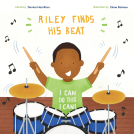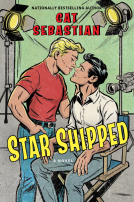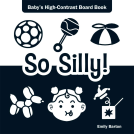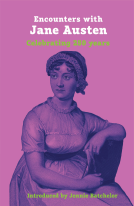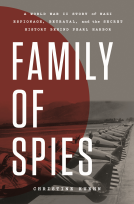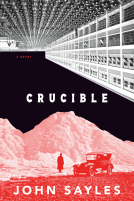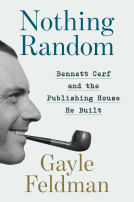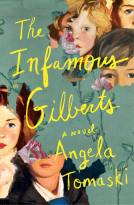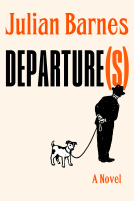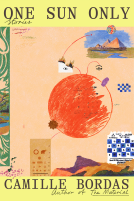
Van Gogh's Finale
Auvers and the Artist's Rise to Fame
by Martin Bailey
This title was previously available on NetGalley and is now archived.
Send NetGalley books directly to your Kindle or Kindle app
1
To read on a Kindle or Kindle app, please add kindle@netgalley.com as an approved email address to receive files in your Amazon account. Click here for step-by-step instructions.
2
Also find your Kindle email address within your Amazon account, and enter it here.
Pub Date Nov 09 2021 | Archive Date Dec 21 2021
Quarto Publishing Group – White Lion | Frances Lincoln
Talking about this book? Use #VanGoghsFinale #NetGalley. More hashtag tips!
Description
Divided into three parts, the book first examines the eventful days from the artists’ departure from the asylum in Saint-Remy and arrival in Auvers until the shooting which brought his life to an end. During this time Van Gogh completed 70 paintings in 70 days.
The second part delves deeper into the story of the artist’s death, which has intrigued both experts and the public for years, revealing little-known stories and uncovering overlooked accounts.
We then follow the story of how Van Gogh subsequently rose from relative obscurity to international renown and ultimately fame as one of the most recognisable and popular artists in the world.
Leading Van Gogh specialist Martin Bailey writes with insight and intelligence, bringing these fateful days to life with colour and character as well as historical expertise, capturing the real sense of a tragic but meaningful life truly lived.
Available Editions
| EDITION | Other Format |
| ISBN | 9780711257009 |
| PRICE | $40.00 (USD) |
| PAGES | 240 |
Average rating from 19 members
Featured Reviews
I adore Van Gogh. In the fall of 2019 I was lucky enough to visit Auvers-sur-oise, France where Vincent spent the last part of his life and is buried. The town itself did not appear to have changed much since Vincent’s time and some of the buildings, like the church, were instantly recognizable from his paintings. This book covers the last 70 paintings (painted in 70 days), his death, and continued legacy. The book is incredibly well researched and has the citations to prove it. I read Martin Bailey’s book Studio of the South, so I knew that this was going to be wonderfully written book. I found the stories absolutely fascinating and I especially found his arguments against the notion that Van Gogh was shot by another to be particularly compelling. In addition to images of Van Gogh’s work there are photographs from the time, images of correspondence, etc. which help to paint a full picture of Van Gogh’s life. I was surprised to learn that about 1/3 of Van Gogh’s works are in private collections and found the information about tracing back the origin of several paintings very interesting. This book probably isn’t for the person casually flip though, but anyone truly interested in the live and death of Vincent Van Gogh will thoroughly enjoy this book.
Thank you to Quarto Publishing Group – White Lion, Frances Lincoln, and NetGalley for the ARC.
Bookstagram post will be posted in the next few days
Thanks to Quarto Publishing Group – White Lion, Frances Lincoln, and NetGalley for the ARC.
I became interested in Van Gogh's work after watching Vincent and The Doctor (Doctor Who) a few years back.
While I know it wasn't some epic work that sparked my love for his art I'm thankful that it showcased it.
I really enjoyed the amount of research that went into this, it had some compelling arguments on his death.
The images shown really help cement the Van Gogh's legacy. This is definitely a book for some that truly loves Van Gogh's work or someone that wants to learn more about his last days.
 Reviewer 515830
Reviewer 515830
This speaks about Van Gogh from 1890 to 1891, as the title states, his finale. Martin Bailey did a great job in piecing together that last year of Van Gogh's life and talks also about Vincent, Van Gogh's brother which was also very interesting. This book is great for anyone interested in Van Gogh or in art history, as it touches a lot of material, it has pictures of Van Gogh's work and others who were in Van Gogh's life.
I am one of those art lovers that has made the pilgrimage to Auvers-sur-oise, France to visit the town of where Vincent Van Gogh spent the last months of his life. Visiting the simple graves of Vincent and his brother Theo was a stark contrast to the morning I'd spent at the palace of Versailles. The lovely village and church were all recognizable from Vincent's paintings. This latest book by Martin Bailey covers the release of Vincent from an asylum to his arrival in this small town outside of Paris. He rented a room in an Inn but was somewhat under the care of Dr. Gachet. In this time period Vincent painted fields, people, homes and the church. In a stunning feat he created 70 paintings in 70 days.
The author follows Vincent from his arrival, to covering where he stayed and the art he painted while there. Vincent's letters are quoted and used to show his mindset and the work he was creating. I was fascinated to learn that what I thought was the artists final work isn't certain. The largest section of the book deals with the death of Vincent. I read the 2011 book, Van Gogh The Life, which promotes the theory that Vincent was shot but a local youth. Bailey disputes that with his own facts and reasonings including copies of statements from the time. Now I'm back to believing his death is a suicide. Instead of the book ending with Vincent's death it continues with how Theo's widow promotes his work. It also follows some of the providences of different paintings. A lot of the little stories were amazing. Small things like Dr. Gachet owning 30 paintings that today would be worth over 1 billion dollars. I also was impressed with the discussion of forgeries and how works that were accepted as his have since been downgraded and taken from museum walls.
This is third in a series by Bailey (I read the second earlier this year) covering Van Gogh's life. They are readable and well referenced. It includes photos of the art and other things being discussed such as letters, funeral programs, newspaper accounts etc. Bailey has curated exhibits for the Van Gogh museum along with other museums and his credentials and knowledge of Van Gogh shine through on every page. I happily recommend this to any one with an interest in Van Gogh or art in general. Thank you to NetGalley and Quarto Publishing Group for the temporary eARC in exchange for an honest review.
Martin Bailey provides an engrossing account of Van Gogh’s last seventy days creating seventy works of art.
A genius with brush, light and color, he painted from the life outside of his window. Setting out in the early morning he captured the wheat fields with black clouds and hovering crows, Dr. Hatchet and his family and village life. His canvases burst with colors and textures. His life of loneliness and madness (from dementia caused by terminal syphilis) was soothed by his creativity, as therapy and survival. The love and commitment of his brother Theo never wavered.
Mr. Bailey’s insight into the painters death and his posthumous rise to fame, especially with the dedication of Theo’s wife Jo (after Theo’s death) are captivating. In his lifetime, he sold only one painting, The Red Vineyard. In death, his works became popular and much sought after. The majority of them residing in private collections today.
This is a definitive account of the end of Van Gogh’s life brilliantly told and much recommended.
My thanks to Martin Bailey, Francis Lincoln Publishers and NetGalley for an ARC in exchange for an honest book review.
When I was twenty I purchased a packet of reproductions of Vincent Van Gogh’s paintings to decorate the apartment. When I was in my forties, his Sunflower painting inspired my color choice for my Sunflower applique quilt.
I don’t recall when I first saw his work, it seems he was always present in our culture. This year, an immersive experience of his work has been touring around the country and I know quite a few who attended, even in the middle of a pandemic.
It is amazing to consider that he only sold one painting in his lifetime because what he was doing so radically new and disconcerting. Today, his paintings are everyone’s favorites, his story known, from Irving Stone’s novel Lust for Life and the movie made of it, and even from Don McLean’s song Starry, Starry Night. You even see his images in commercials on television.
Van Gogh’s Finale: Auvers and the Artist’s Rise to Fame studies Van Gogh’s last seventy days of life in Auvers and the seventy paintings he accomplished in those days.
After his falling out with fellow artist Paul Gaugin, and his self-mutilation of his ear; after his time in the asylum and several attempts to end his life; Van Gogh traveled to Auvers to recover. Dr. Paul Gachet welcomed him into his circle as part of his supervision of Van Gogh. The artist set up in a cheap room and every morning set out to paint the village and the wheat fields. He also painted the Doctor and his family and their home. His art was a refuge and a therapy. When Van Gogh ran out of canvas, he painted on linen towels!
Gorgeous color illustrations of the paintings bring the text to life as author Martin Bailey discusses the works.
During this time, Van Gogh was visited by, and visited, his beloved brother Theo and his young wife Jo and their baby Vincent Willem. Van Gogh loved them all, so it was hard to see his brother in ill health, Jo tired after childbirth, and perhaps suffering from post-partem depression, and the baby was not thriving and their finances precarious.
The author discusses the huge, unpeopled, wheat fields, the ripe fields being harvested, as symbols of Van Gogh’s feelings of isolation, loneliness, his awareness of mortality. There is discussion over which was his last painting, but one of the last was the Wheatfield with Crows with its ominous, dark sky, the hovering crows black over a wheat field like a tumultuous sea.
If during Vincent’s visit Theo had confided his condition–that he had symptoms of dementia paralytica from terminal syphilis and was failing–could that have precipitated the artist’s action to end his life?
Bailey actually held the rusted remains of the gun found where Van Gogh shot himself and which was perhaps the weapon he used. Having missed his targeted heart, Van Gogh lingered before death, in great pain, smoking his pipe and talking with his friend Dr. Gachet, who sketched his deathbed portrait.
Bailey then turns his attention to Van Gogh’s rising fame, how after Theo’s death, Jo dedicated her life to the work of the men she loved so well, promoting the paintings and finding buyers.
In 2022, the Detroit Institute of Art will present Van Gogh in America. The DIA was the first American museum to purchase a Van Gogh, his 1887 self-portrait. The DIA also owns a painting from Van Gogh’s time in Auvers, Bank of the Oise at Auvers. There will be sixty-five paintings. I can’t wait to see it.
I received a free egalley from the publisher through NetGalley. My review is fair and unbiased.
This is a detailed and beautifully illustrated book about Vincent Van Gogh’s final months in Auvers in 1890. Part 1 describes his arrival, living arrangements, and paintings. Part 2, titled The End, goes into detail about his death and funeral. Part 3 is the rise to fame and what happened to the various paintings. I found the book interesting and informative and enjoyed the read.
 John L, Reviewer
John L, Reviewer
No, I am not about to break form and give this author any less than five stars any time soon. I'm not an expert in art (I know what I like, etc) but I don't see the point in assuming there is an author who can present his forensic research so eagerly, so lightly-of-touch, and so authoritatively, where this subject is concerned. This suitably concludes a superlative trilogy bringing the minutiae of the last years of van Gogh to the average commuter-reader and scholar alike. So after a wonderful look at his Arles studio (https://www.goodreads.com/review/show/4167638135), and a middle book concerning the artist's incarceration (https://www.goodreads.com/review/show/2524248571), this is the final spurt of freedom – lolling around with the Gachets, recording the landscapes, flowers and wheatfields of the region north of Paris – and then deciding to shoot himself and stagger home, never to fully recover.
This is once more such a wonderfully readable guide to the months concerned, setting the scene, committing new research and revelations to paper, and being a perfect blend of biography and art appreciation, as every genre of his art in a seventy-works-in-seventy-days period gets a chapter to itself. I don't think I'll be alone in considering this even more laudatory because it has to concern itself with the least powerful output of the three volumes, much of this being on the sketchier, less polished side. It's little wonder, then, the book addresses the instances of fakery in the years since, as it looks at just how the van Gogh name got to be so powerful in the galleries and auction houses. So seldom has a subject received the perfectly matching author; masters both.
The book beautifully describes the life of Van Gogh's to his death including his master pieces and how he created 70 paintings in 70 days. It then shows how he and his arts became renowned and world famous.
If you're a fan of Van Gogh's this is for your collection. Better buy a physical copy to have a good view of his artworks.
Readers who liked this book also liked:
Jennie Batchelor, Julia Quinn, Natalie Jenner, Charlie Lovett, Talulah Riley, Janet Todd et al
Essays & Collections, Novellas & Short Stories, Women's Fiction
